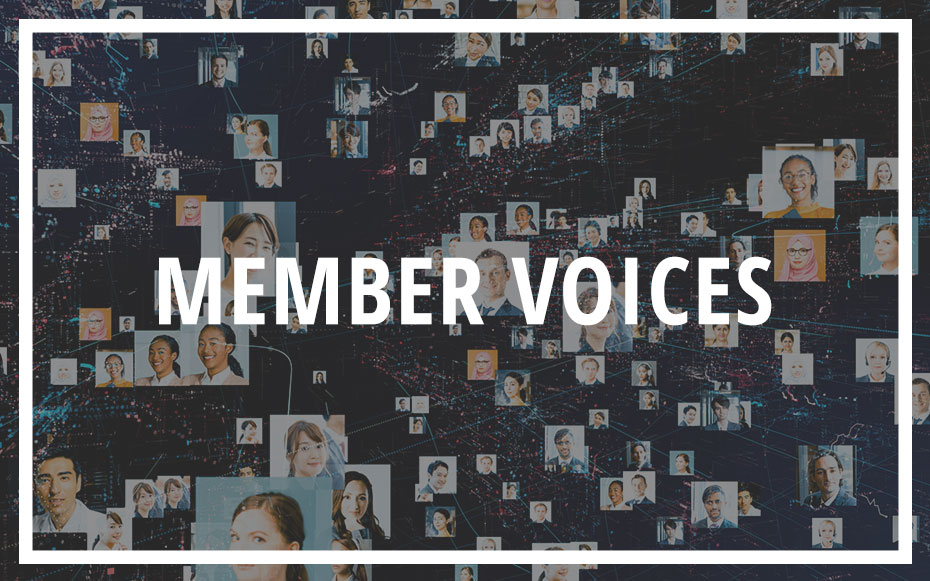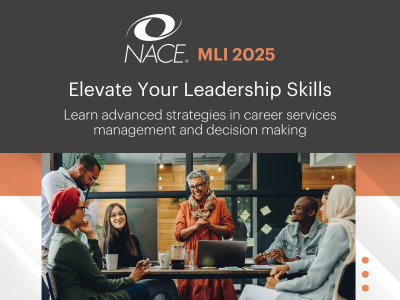As the world evolves due to advancements in technology, an active and engaging LinkedIn profile has become an absolute must-have for students preparing to enter the workforce after graduating. It’s critical for aspiring professionals to get situated with LinkedIn to build and expand their network while marketing themselves to appear relevant and competitive for jobs.
In this article, I’ll unpack the nuances associated with this tool and discuss how it is grounded in initiating and sustaining relationships. Managing relationships, subsequently, is an ongoing, highly individualized, and fluid process without any guarantees, based on an individual’s confidence level and how they view their status in the professional sphere.
I believe career services professionals and higher-education faculty can also leverage this insight to further empower their students to gain agency, become knowledgeable about LinkedIn, and take ownership over their professional journeys.
Change is the Only Constant
LinkedIn says it's the “world’s largest professional network” and boasts nearly a billion members in over two hundred countries. This is substantial in terms of access to both people and potential opportunities in all employment sectors, regardless of physical distance.
Given the professional aspect of LinkedIn, the tendency to describe it purely as a “social media” platform is, in my opinion, unhelpfully reductive. That said, the “social” side of LinkedIn still applies, as engaging with other professionals on the site requires an understanding of unspoken codes and expectations. Gaining confidence to read the room, wield political acumen, and exercise discretion with colleagues and supervisors—whether in-person or virtually—takes time and practice, ultimately building on a series of lived experiences that don’t always rely on cut-and-dried “correct” methods or answers.
Many recent examples of individuals disclosing information about toxic work environments, mental health challenges, and other enduring life circumstances or gratifying non-work-related moments on LinkedIn have made me reevaluate how the concepts of discretion, context, formality, and professionalism function on this platform. I’ve even found myself asking whether LinkedIn’s social side has begun overshadowing its professional intent.
Can LinkedIn still claim to be a “professional network?” Would its users openly mention such personal details during an in-person interaction with the same individuals they’re communicating with online? What are the consequences of such disclosures, if any, and who benefits from them? Or are these posts an indicator of communication practices evolving due to an increasing number of technological communication outlets? LinkedIn was initially conceived as a job- and career- oriented resource and was called “Facebook for suits” in a recent article from the BBC, which looks into the trend of divulging personal details on LinkedIn.
Instant Communication is a Myth
Communication happens in countless ways and can be subtle or direct, visible or invisible, and subject to cultural contexts. Immediate access to information is not synonymous with immediate comprehension, and communication through LinkedIn can be a lot slower than what we might be accustomed to on other platforms. This resource, after all, is mostly about dealing with people online, all of whom are (supposedly) either trying to secure employment or acting as a member of the professional sphere. It’s impossible to predict another user’s bandwidth, comfort level, or how often they check their account.
With this in mind, how can we advise students to reach out to people on LinkedIn in a way that effectively gets a reply? And once initiated, how can they sustain those relationships?
Outreach messages to people on LinkedIn must be configured for each individual; this is similar to tailoring a cover letter for each desired role. Students should be advised to carefully review the profile of your person of interest, looking at sections such as where they completed their education, what kind of job titles have they held, and who is their employer.
From there, students should be advised to draft a message that includes their name, title, school, and any commonalities shared between them and the contact. However, students must also remember that the value of titles and educational affiliations depends on social, geographical, and cultural contexts. I advise students to avoid inquiring about any particular opportunity in the initial outreach and focus on the individual instead. In addition to being polite, this tactic takes advantage of our brains’ positive biochemical reactions when we’re invited to talk about ourselves.
It’s impossible to forecast whether a student will receive a reply, but the probability is higher based on how many requests have been sent out.
Important Considerations
Participating in an active professional network is critical to success in the job market. Research reported on by CNBC indicates that nearly 80% of positions are filled through connections, rather than just with an application. For most college students, however, the available pool of professional connections is relatively small, especially in comparison to the personal connections they’ve formed through their educational experience, religious or civic organizations, student groups, and so on.
These personal connections are obviously important and a great starting point for building a professional network; job fairs and internships can likewise open doors to networking opportunities. But ultimately, the onus will fall on the students themselves to leverage the connections they make and follow up on the conversations that spring from them.
Strategy, intentionality, and consistency will quickly set a student apart in the world of career networking, and LinkedIn can provide the tools and space to implement those techniques. After all, LinkedIn is a tool, a means to an end, but investing in genuine relationships requires time, effort, patience, honest communication, and vulnerability. Building trust and showing likeability, I believe, is an ongoing series of trial and error, a human-centric process that even the most advanced social platform or algorithm is unable to imitate.



